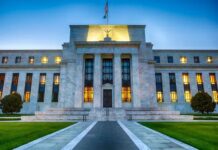“Minstrel,” reads the label on the canister of pancake makeup. The provocative object sits in a glass case next to another tin marked “Chinese,” in the costume, hair and makeup section of the new Academy Museum. Curators placed the 80-year-old jars — used so white actors could play characters of color, often in glaringly stereotypical ways — in the gallery alongside film history pieces with far breezier legacies, like the comfy beige bathrobe Jeff Bridges wore in The Big Lebowski.
“Those histories are combined,” says Jacqueline Stewart, the Chicago film scholar and TCM host who is the museum’s chief artistic and programming officer. “We talk about what it means when [blackface and yellowface] is a prevalent industry practice, and we do that in dialogue with pointing out all of the tremendous technical innovations in hair and makeup and costumes.”
With the opening of the new Academy Museum on Sept. 30, the conversation about Hollywood history in all its complexity is officially on after nearly a century of efforts. The $484 million museum is arriving after decades of false starts in fundraising, years of construction and pandemic-related delays. The timing, the museum’s leaders hope, will benefit both the institution and the medium it celebrates and critiques.













